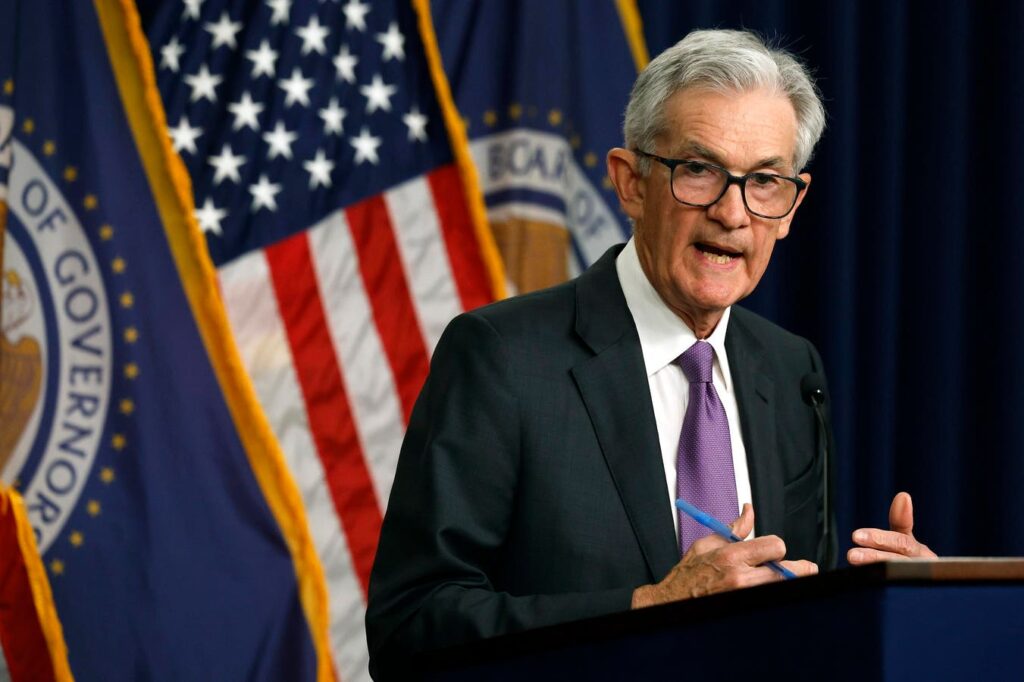In a recent press conference held on March 20, 2024, Federal Reserve Bank Chair Jerome Powell announced that the Federal Open Markets Committee decided to maintain interest rates at around 5.3 percent. The decision reflects the Fed’s cautious approach to monetary policy amid easing inflation and the uncertainty surrounding future economic conditions. Powell hinted at the possibility of three interest rate cuts later in the year, contingent upon the trajectory of inflation, which has shown significant decline from its peak levels. The upcoming Consumer Price Index (CPI) report for November, set for release on December 11, is particularly crucial, with many observers focusing on its implications for the Fed’s inflation target of 2% annually. The recent reduction in inflation has raised questions about the timeline and potential efficacy of subsequent rate cuts in 2025.
The economic landscape has been further complicated by the Federal Reserve’s inflation nowcasting data from the Cleveland Fed, which indicates that headline inflation could rise to an annual rate of 2.7%, a slight acceleration from the previous month. In contrast, core inflation—which excludes volatile food and energy prices—is projected to remain steady at 3.3%. This stagnation in core inflation is significant as it suggests underlying price pressures may not have eased substantially. Additionally, the continued strength of the labor market is an essential factor in the Fed’s deliberations regarding monetary policy. Although market expectations lean towards a cautious pace for potential rate cuts, the ongoing evaluations of inflation metrics and employment trends will play pivotal roles in shaping the Fed’s decisions in the coming months.
A noteworthy concern that may impact future inflation trends is the potential for tariffs that incoming President Donald Trump has signaled for January 2025, targeting imports from China, Mexico, and Canada. This anticipated increase in trade barriers could raise prices on goods sourced from these countries, thereby contributing to inflationary pressures. Minneapolis Fed President Neel Kashkari weighed in on this issue, noting that the immediate effect of imposed tariffs would likely translate to higher costs commensurate to the percentage of the tariffs. However, he pointed to the complexities of escalating trade tensions and retaliatory measures as a potential source of long-term inflation uncertainty. The question remains whether the Federal Reserve, in response to potential temporary price spikes due to tariffs, would adjust its interest rate policy, particularly given their commitment to guiding inflation back to the 2% target.
Home prices have emerged as another critical variable in the inflation equation, especially considering their substantial weight—in excess of 36%—in the overall CPI basket. Recent trends indicate that home prices have been rising at nearly a 5% annual rate, which has contributed to sustained inflation levels. In the context of the November CPI report, the Fed will closely monitor these housing trends due to their significant influence on inflation calculations. Should home prices begin to decline, as anticipated by some analysts, it may support a trajectory towards achieving or even falling below the Fed’s inflation target. However, recent data shows minimal evidence indicating a reversal in current inflation trends linked to housing costs.
Looking ahead to the Fed’s decision on interest rates in December, market analyses suggest a delicate balance between the possibility of cutting rates and maintaining current levels. At present, the probability of a rate cut is considered slightly more favorable. This dependency on upcoming inflation figures suggests that if the November CPI report indicates slower-than-expected inflation, it could bolster the case for an interest rate reduction during the December 18 meeting. Nonetheless, any unexpected weaknesses in the labor market could sway the Fed’s considerations towards a cut, even in the absence of clear signals of inflation retreating towards the 2% target.
In summary, the interconnections between inflation data, employment figures, and broader economic policies such as tariffs are shaping the Federal Reserve’s monetary approach. The upcoming CPI data will be pivotal in guiding the Fed’s decisions regarding interest rates, particularly in light of both domestic economic signals and international trade dynamics. While the Fed is keen to steer inflation back towards its target, external pressures such as rising home prices and potential tariff implementations challenge this objective. As financial markets respond to these evolving economic factors, the Fed’s strategic stance will continue to adapt in the pursuit of stabilizing prices while fostering sustainable economic growth.

